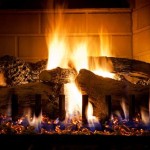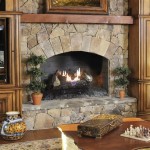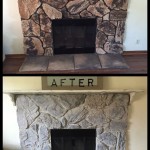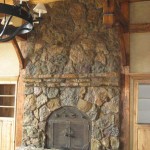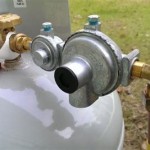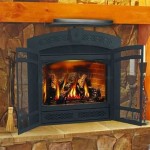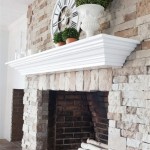Fireplaces in Sioux Falls, South Dakota: A Guide to Options and Considerations
Sioux Falls, South Dakota, experiences significant temperature variations throughout the year, making fireplaces a desirable and often essential feature in many homes. Fireplaces not only provide supplemental heating but also contribute to the ambiance and aesthetic appeal of a living space. This article explores the various types of fireplaces available in Sioux Falls, considerations for choosing the right fireplace, and factors influencing installation and maintenance.
The decision to install or upgrade a fireplace involves numerous factors, including the existing infrastructure of the home, the desired heat output, aesthetic preferences, and budget. Furthermore, local regulations and safety codes must be strictly adhered to during installation and operation to ensure the well-being of residents and the structural integrity of the building.
Types of Fireplaces Available in Sioux Falls
The Sioux Falls market offers a diverse range of fireplace options, each with unique characteristics and benefits. Understanding these differences is crucial for selecting the most appropriate fireplace for a particular home and lifestyle.
Wood-Burning Fireplaces: Wood-burning fireplaces are the traditional choice, offering the authentic experience of a crackling fire and the distinctive aroma of burning wood. These fireplaces can be either masonry fireplaces, built from brick or stone, or prefabricated metal inserts. Masonry fireplaces are typically built as part of the home's structure and require a significant investment. Prefabricated inserts offer a more cost-effective alternative, allowing for easier installation into existing chimney openings. Wood-burning fireplaces require a consistent supply of seasoned wood and regular maintenance, including chimney cleaning to prevent creosote buildup and potential fire hazards. While offering a classic aesthetic and considerable heat output, wood-burning fireplaces are subject to local air quality regulations and may require specific permits for installation and operation.
Gas Fireplaces: Gas fireplaces offer a convenient and efficient alternative to wood-burning fireplaces. They operate on either natural gas or propane and provide a readily available source of heat with minimal effort. Gas fireplaces are available in a variety of styles, including direct-vent, vent-free, and B-vent models. Direct-vent fireplaces draw combustion air from outside and exhaust gases directly outdoors, providing optimal efficiency and safety. Vent-free fireplaces, while offering simpler installation, require careful consideration due to potential indoor air quality concerns. B-vent fireplaces utilize existing chimneys for venting, but may be less efficient than direct-vent models. Gas fireplaces offer precise temperature control and can be operated with a remote control or thermostat, providing consistent and reliable heat. They also eliminate the need for wood storage and reduce particulate emissions compared to wood-burning options. Regular maintenance, including burner cleaning and gas line inspection, is essential for safe and efficient operation.
Electric Fireplaces: Electric fireplaces offer a convenient and versatile heating solution, requiring no venting or fuel supply. They operate by converting electricity into heat and typically feature realistic flame effects to mimic the appearance of a real fire. Electric fireplaces are available in a wide range of styles, from freestanding units to wall-mounted models, and can be easily moved and installed in various locations. While they provide supplemental heat, electric fireplaces are generally less powerful than wood-burning or gas fireplaces and are best suited for smaller spaces. They are an ideal choice for apartments, condominiums, or homes where venting is not feasible. Electric fireplaces require minimal maintenance, typically involving occasional cleaning of the unit and replacement of light bulbs. They also offer the advantage of operating without producing any emissions or consuming fossil fuels.
Ethanol Fireplaces: Ethanol fireplaces, also known as bio-ethanol fireplaces, burn liquid ethanol fuel, which is derived from renewable sources. They do not require venting or gas lines, making them a flexible option for various spaces. Ethanol fireplaces produce real flames and a small amount of heat, contributing to the ambiance of a room. However, they typically don't generate enough heat to serve as a primary heating source. The fuel used in ethanol fireplaces is generally considered clean-burning, but it's important to use high-quality ethanol and comply with safety regulations during refueling. Regular cleaning of the burner and surrounding area is recommended to maintain optimal performance and safety.
Key Considerations for Choosing a Fireplace in Sioux Falls
Selecting the right fireplace for a home in Sioux Falls requires careful consideration of several factors, including heating requirements, aesthetic preferences, budget, and local regulations.
Heating Needs and Efficiency: The primary purpose of a fireplace may be to provide supplemental heat to a specific area or to heat the entire home. Wood-burning and gas fireplaces generally offer greater heat output than electric fireplaces, making them better suited for larger spaces or colder climates. The efficiency of a fireplace is measured by its ability to convert fuel into usable heat. Direct-vent gas fireplaces are typically the most efficient, followed by wood-burning fireplaces with airtight inserts. Electric fireplaces are generally less efficient, but they offer the advantage of heating only the space needed.
Aesthetic Preferences and Design: Fireplaces serve as a focal point in many living spaces, and their design should complement the overall aesthetic of the home. Wood-burning fireplaces offer a traditional and rustic charm, while gas and electric fireplaces are available in a variety of styles, from modern and minimalist to classic and ornate. Considerations include the fireplace's size, shape, materials, and finish. Fireplace surrounds, mantels, and hearths can be customized to match the decor of the room. The flame presentation is also an important factor, with gas and electric fireplaces offering various flame patterns, colors, and intensities.
Budget and Installation Costs: The cost of a fireplace varies significantly depending on the type, size, and complexity of the installation. Wood-burning fireplaces typically require a larger upfront investment due to the cost of masonry work or the installation of a prefabricated insert and chimney. Gas fireplaces require gas line installation and venting, which can add to the overall cost. Electric fireplaces are generally the most affordable option, with minimal installation requirements. Ongoing operating costs should also be considered, including the price of wood, gas, or electricity. Maintenance costs, such as chimney cleaning and gas line inspections, should also be factored into the budget.
Local Regulations and Safety Codes: The City of Sioux Falls and South Dakota state regulations mandate specific requirements for fireplace installations, including permits, inspections, and adherence to safety codes. These regulations ensure that fireplaces are installed and operated safely to prevent fire hazards and protect air quality. Wood-burning fireplaces may be subject to restrictions during periods of high air pollution. Gas fireplaces must be installed by licensed professionals to ensure proper gas line connections and venting. Electric fireplaces must comply with electrical safety codes. Prior to installing any type of fireplace, it's essential to consult with local building officials and obtain the necessary permits.
Installation and Maintenance of Fireplaces in Sioux Falls
Proper installation and ongoing maintenance are crucial for ensuring the safe and efficient operation of a fireplace. Adhering to manufacturer's instructions and local regulations is essential for preventing hazards and maximizing the lifespan of the fireplace.
Professional Installation: For wood-burning and gas fireplaces, professional installation is highly recommended to ensure that all connections are made correctly and that the fireplace is properly vented. Licensed contractors are familiar with local regulations and safety codes and can ensure that the installation meets all requirements. Professional installation also provides peace of mind and protection against potential liability issues. Electric fireplaces can typically be installed by homeowners, but it's important to follow the manufacturer's instructions carefully and ensure that the electrical circuit is properly rated.
Chimney Cleaning and Inspection: For wood-burning fireplaces, regular chimney cleaning is essential to remove creosote buildup, which is a flammable substance that can accumulate in the chimney and cause a chimney fire. Chimney cleaning should be performed by a qualified professional at least once a year. Chimney inspections should also be conducted regularly to identify any cracks, leaks, or other damage that could compromise the safety of the fireplace. Damaged chimneys should be repaired promptly to prevent water damage and structural problems.
Gas Line Inspections and Maintenance: Gas fireplaces require regular gas line inspections to detect any leaks or corrosion. These inspections should be performed by a licensed gas technician. Burners should be cleaned regularly to remove any debris that could obstruct the gas flow and reduce efficiency. The pilot light should be checked to ensure that it is burning properly. Any damaged or worn components should be replaced promptly to prevent gas leaks or other hazards.
General Maintenance and Safety Practices: Regardless of the type of fireplace, regular cleaning and maintenance are essential for optimal performance and safety. Remove ashes from wood-burning fireplaces regularly to prevent smoldering embers. Keep flammable materials away from the fireplace. Install smoke detectors and carbon monoxide detectors in the home to provide early warning of any potential hazards. Never leave a fire unattended, and always supervise children and pets around the fireplace. By following these safety practices, homeowners can enjoy the warmth and ambiance of a fireplace while minimizing the risk of accidents.
The selection and maintenance of a fireplace in Sioux Falls, South Dakota, represents a multifaceted decision. Homeowners must carefully weigh their heating needs, aesthetic preferences, budget, and local regulations to choose the most appropriate option. Whether opting for the traditional charm of a wood-burning fireplace, the convenience of a gas fireplace, or the versatility of an electric fireplace, proper installation and ongoing maintenance are paramount for ensuring safe and efficient operation.

Fireplaces In Sioux Falls Sd Midwest

Fireplaces In Sioux Falls Sd Midwest

The Fire Emporium Sioux Falls Sd

The Fire Emporium Sioux Falls Sd

Gallery Midwest Fireplaces Sioux Falls Sd

Midwest Fireplaces Sioux Falls The Local Best

Midwest Fireplaces Sioux Falls The Local Best

Gallery Midwest Fireplaces Sioux Falls Sd

The Best 10 Fireplace Services In Sioux Falls Sd Professionals Last Updated December 2024 Yelp

Brands Midwest Fireplaces Sioux Falls Sd
Related Posts

